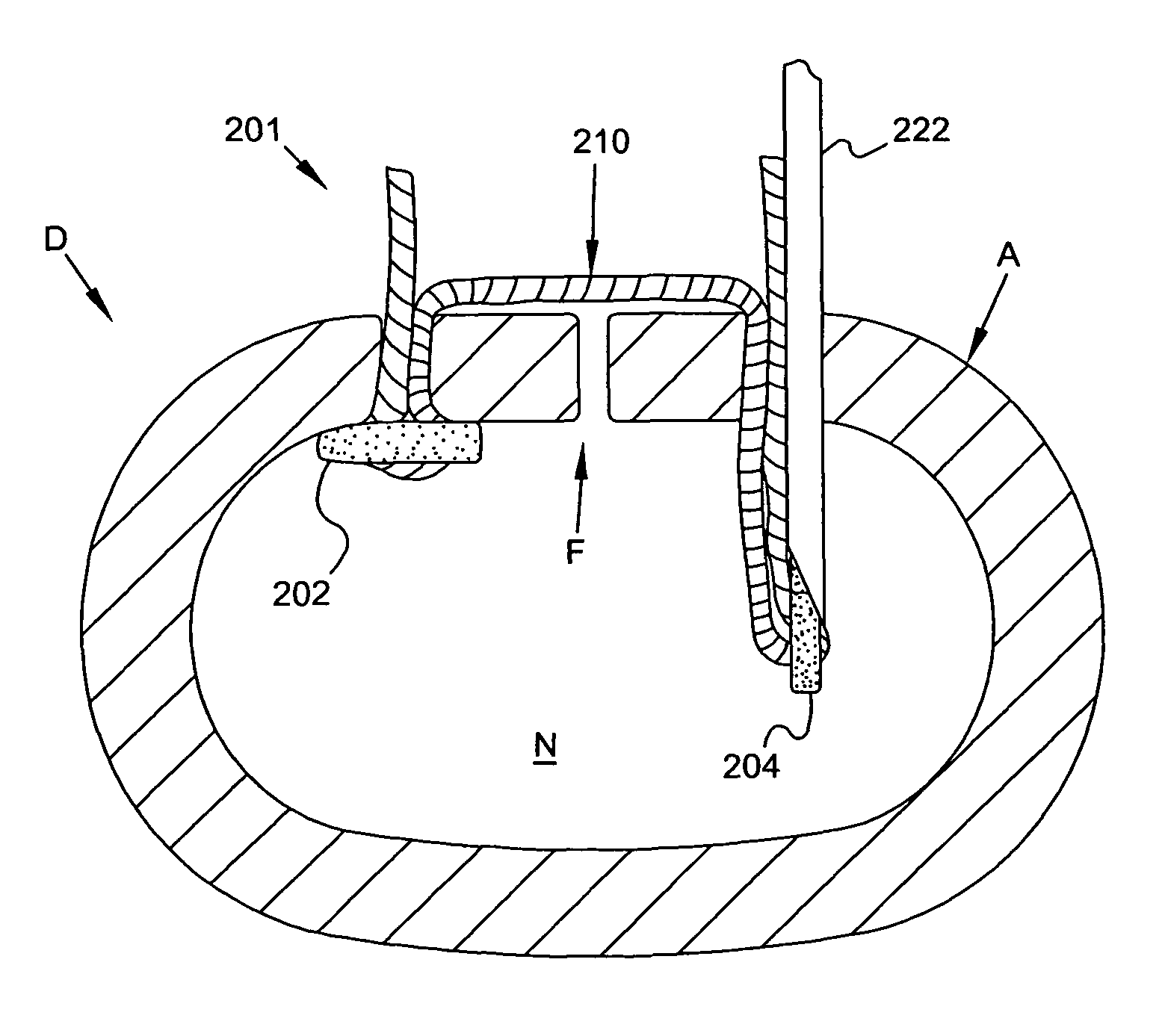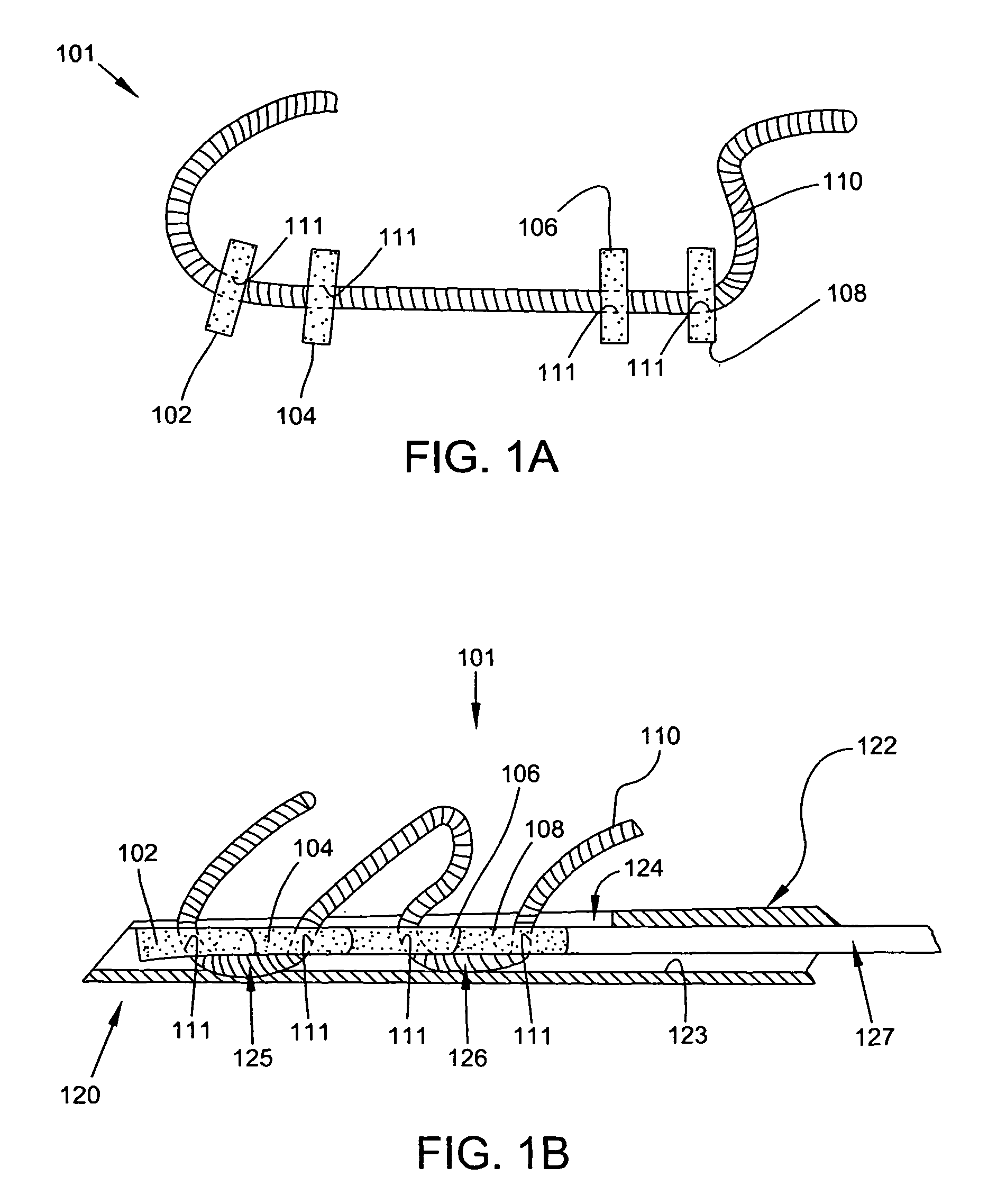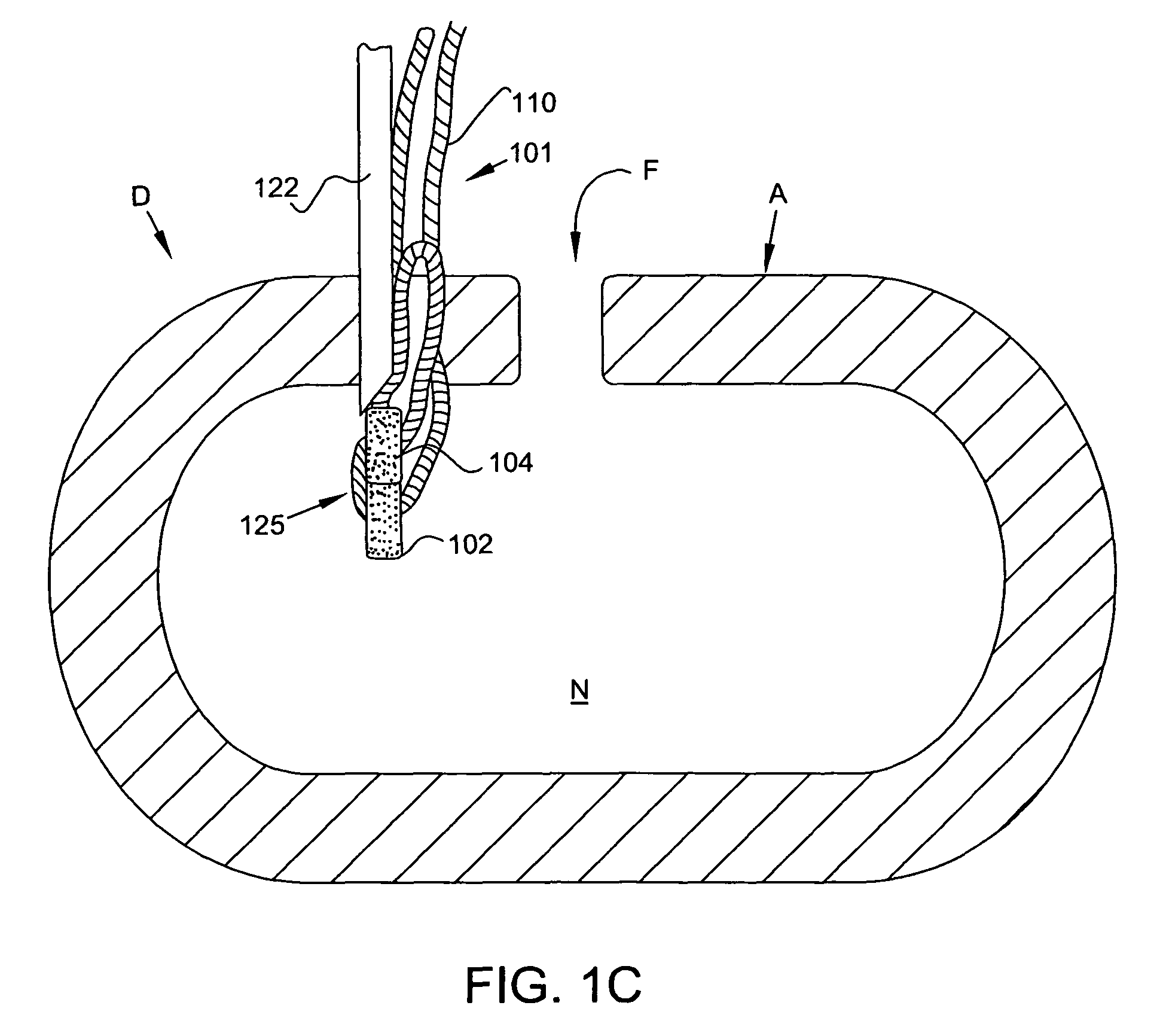Method and apparatus for closing fissures in the annulus fibrosus
a technology of annulus fibrosis and fissures, which is applied in the field of annulus fibrosis closure methods and apparatuses, can solve the problems of degenerative disc disease being frequently the cause of substantial pain for patients, the annulus becomes thinner and less able to handle compressive loads, and the redundant annular fibers are less effective in controlling vertebral motion, so as to facilitate the reconstruction of the annulus, prevent recurrent herniation, and prevent disc herniation
- Summary
- Abstract
- Description
- Claims
- Application Information
AI Technical Summary
Benefits of technology
Problems solved by technology
Method used
Image
Examples
Embodiment Construction
[0080]For the purposes of clarity of description, the present invention will hereinafter generally be discussed in the context of closing a tear or fissure formed in the posterior annulus of an intervertebral disc, however, it should be appreciated that the present invention is also applicable to closing a tear or fissure formed in another portion of the annulus of an intervertebral disc, or to closing a tear or fissure or other opening formed in another anatomical structure, etc.
[0081]FIG. 1A is a schematic view showing apparatus 101 for closing a fissure in the annulus. Apparatus 101 generally comprises cylindrical transverse anchor components (e.g., bar anchors) 102, 104, 106, 108 that are slidably mounted on a flexible longitudinal fixation component (e.g., filament) 110. The flexible longitudinal fixation component 110 passes through a hole 111 in each transverse anchor component 102, 104, 106, 108. The transverse anchor components 102, 104, 106, 108 are preferably about 0.8 to...
PUM
| Property | Measurement | Unit |
|---|---|---|
| axial tension | aaaaa | aaaaa |
| lateral tension | aaaaa | aaaaa |
| angle | aaaaa | aaaaa |
Abstract
Description
Claims
Application Information
 Login to View More
Login to View More - R&D
- Intellectual Property
- Life Sciences
- Materials
- Tech Scout
- Unparalleled Data Quality
- Higher Quality Content
- 60% Fewer Hallucinations
Browse by: Latest US Patents, China's latest patents, Technical Efficacy Thesaurus, Application Domain, Technology Topic, Popular Technical Reports.
© 2025 PatSnap. All rights reserved.Legal|Privacy policy|Modern Slavery Act Transparency Statement|Sitemap|About US| Contact US: help@patsnap.com



